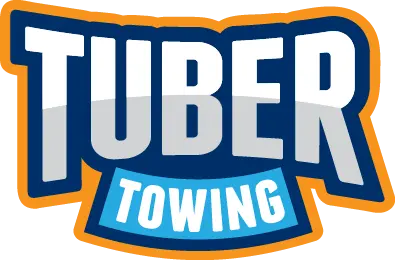Properly Hitch A Trailer

Properly hitch a trailer with these 7 essential tips to ensure safety, prevent damage, and protect your vehicle and cargo on the road. Whether you’re towing for work or recreation, knowing the correct hitching steps can make all the difference.
At Tuber Towing Recovery and Services, we often get called to help with incidents caused by poorly hitched trailers. That’s why we’re sharing our expert guide to doing it right the first time.
Want a visual walkthrough? Subscribe to our YouTube channel, TuberTaylor to see real-world demonstrations, safety tips, and behind-the-scenes footage from Alberta’s highways.
1. Understand Your Equipment
Before hitching anything, get familiar with the parts of your towing setup:
- Receiver Hitch: Attached to your tow vehicle’s frame.
- Ball Mount & Hitch Ball: Slides into the receiver and connects to the trailer coupler.
- Trailer Coupler: The mechanism on the trailer that latches onto the hitch ball.
- Safety Chains: Provide a backup connection in case the coupler fails.
- Trailer Jack: Raises or lowers the trailer to connect/disconnect.
- Wiring Harness: Connects the trailer lights to your vehicle.
Not all towing setups are universal. Make sure your ball size, mount class, and weight ratings are appropriate for the trailer you’re towing.
Need heavy-duty towing? Check out our towing services in Edmonton and Spruce Grove.
2. Line Up the Vehicle and Trailer
Start by aligning the tow vehicle and the trailer as straight as possible:
- Use a spotter if available, especially for larger trailers.
- Back your vehicle up slowly until the hitch ball is directly under the coupler.
- Chock the trailer wheels to prevent movement before you start working.
Pro tip: If you’re doing this solo, a backup camera or hitch alignment tool can save a lot of time and frustration.
3. Lower the Coupler Onto the Ball
With the trailer jack, lower the coupler onto the ball:
- Ensure the coupler fully seats over the ball.
- Lock the coupler latch and insert a safety pin or lock to secure it.
- Raise the trailer jack completely off the ground to avoid dragging.
Never rely solely on the coupler latch without securing it with a pin or lock—bumps in the road can cause an unsecured trailer to pop loose.
4. Attach Safety Chains Correctly
Safety chains are a critical backup system. Attach them as follows:
- Cross the chains under the coupler (this creates a cradle in case the trailer drops).
- Leave enough slack for turning, but not so much that they drag.
- Connect them securely to the frame-mounted loops on your tow vehicle—not to the hitch ball or bumper.
We cover this in detail in our trailer safety video on TuberTaylor.
5. Plug in the Wiring Harness
Your trailer’s brake lights, turn signals, and running lights need to be in sync with your vehicle.
- Connect the 7-pin or 4-pin wiring harness from the trailer to your vehicle.
- Test all lights before moving:
- Left and right turn signals
- Brake lights
- Hazard lights
- Running lights
Driving without working trailer lights is illegal and dangerous. Always test before departure.
6. Perform a Final Safety Check
Before you hit the road, go through this checklist:
- Coupler is securely locked with a pin or latch
- Trailer jack is fully raised
- Safety chains are crossed and clipped properly
- Wiring is connected and lights are working
- Tires are inflated and in good condition
- Load is properly distributed and tied down
This quick check can prevent major issues once you’re in motion.
7. Tow Safely and Responsibly
Once hitched, adjust your driving for the added load:
- Take wider turns
- Brake earlier than normal
- Avoid sudden lane changes
- Check mirrors frequently
Also, keep your speed within limits. Excessive speed with a trailer can lead to swaying, especially in windy conditions or when passing large trucks.
If your trailer starts to sway, stay calm—don’t brake hard. Ease off the gas and keep the steering wheel steady.
Need emergency towing or trailer recovery? Call Tuber Towing any time, 24/7.
Common Hitching Mistakes to Avoid
Even experienced drivers can make critical mistakes when rushing or multitasking. Here are a few to avoid:
- Forgetting to lock the coupler
- Skipping safety chains
- Using mismatched or overloaded towing equipment
- Not checking tongue weight balance
- Leaving the trailer jack down
Why Proper Hitching Matters
Poor hitching can lead to:
- Accidents and injuries
- Trailer separation
- Equipment failure
- Traffic violations
- Insurance claims or denial
Your trailer is an extension of your vehicle—and it needs just as much attention to detail.
Final Thoughts
Learning how to properly hitch a trailer to your vehicle is essential knowledge for anyone towing cargo, whether once a year or every weekend. A secure connection means a safer journey for you and everyone on the road.
At Tuber Towing Recovery and Services, we’ve seen what happens when shortcuts are taken—and we’re here to help make sure you do it right. From expert roadside assistance to heavy-duty recovery, we’ve got your back across Alberta.
For more tips and real-world towing tutorials, subscribe to our YouTube channel: TuberTaylor
